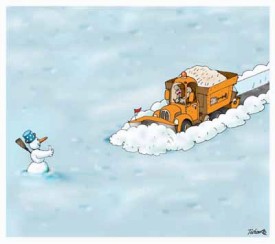Ten years since March pogrom against Serbs in Kosovo
It is ten years today since a pogrom was committed against Serbs in Kosovo and its order-givers and organizers from Albanian political and paramilitary structures have still remained unnamed and unpunished.
(kosovocompromisestuff) Monday, March 17, 2014
The pogrom was triggered by a campaign waged by Albanian media stating that a number of Kosovo Serbs and their dogs chased six Albanian boys from the village of Cabar near Zubin Potok across the Ibar River and three of the boys died in the incident.The investigation into the claims carried out by the UNMIK police established that the Albanian charges were false and spokesman for the international police Neridz Sing stated that after the incident, the surviving boys were fiercely pressured by Albanian reporters and politicians into pressing accusations against Serbs from the nearby village.Albanian extremists first staged protests in southern Kosovska Mitrovica, and at dusk, they launched an armed attack on the Serbs in the northern part of the city, where KFOR soldiers had to intervene. In a cloud of tear gas and smoke, an Albanian sniper was shooting from a skyscraper, killing the first two victims - Borivoje Spasojevic (53) and Jana Tucev (36) - and severely wounding a KFOR soldier before the international forces' special team managed to get him down.Violence and attacks spread to the south, to the village of Caglavica and other dwellings in the Pristina area, and Serb villages and cities across the province, such as Lipljan, Gnjilane, Urosevac, Djakovica and Prizren.The clashes continued into the next day, March 18, when Serbs were forced to abandon Kosovo Polje, Obilic, Plemetina near Vucitrn, Svinjare near Kosovska Mitrovica, and fire was set to all the 28 houses of Serb returnees and the village hall in Bijelo Polje near Pec.Small groups of Serbs sought shelter in KFOR bases, while others took refuge in safer Serb enclaves. A very small number of them decided to return and around 250 Serbs fled to central Serbia.Protests broke out in several cities, mosques were put to flames in Nis and Belgrade and 17 civilians and police officers were injured in the unrests in the Serbian capital.Representatives of the international community stated that the ethnically motivated violence against Serbs in KiM was pre-planned and carried out accordingly but it turned out that over 20.000 members of international forces were not ready, or were not willing, to prevent it.According to data from the Serbian intelligence sources, Ramus Haradinaj, one of the commanders of the terrorist Kosovo Liberation Army (KLA), whom the ICTY acquitted of all charges for crimes against Serbs, pulled the strings of the March pogrom.Samedin Dzezairi, also known as Commander Hodza, had a key role in the attacks on the Serbs in Prizren, Urosevac and Orahovac. He was an Islamic terrorist who arrived in KiM to set up a branch of the "Party of Allah" - Hezbollah.After the pogrom of Serbs, the authorities arrested 270 Albanians and verdicts were reached against 143 individuals, 67 of whom were sent to prison while most of others were only made to pay fines. However, the key players, those from political structures and the former KLA, were not among them.Despite promises that they will be able to return to their homes very soon, most of the expelled Serbs still live in collective centers, container settlements or in the homes of other people as "internally displaced people."The terror by Albanian separatists was formally condemned by the UN Security Council and European officials, and the Parliamentary Assembly of the Council of Europe condemned it through a resolution adopted on April 29. However, despite the atrocities and ethnic cleansing, the ethnic Albanians did not suffer any political sanctions.On the contrary, backed by the leading western countries, in February 2008, they unilaterally declared Kosovo an independent state, a move not accepted or recognized by the Serbian authorities.






